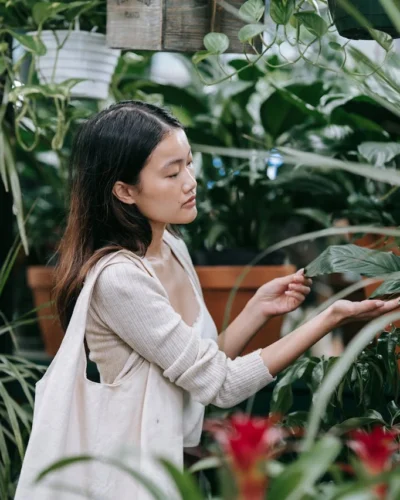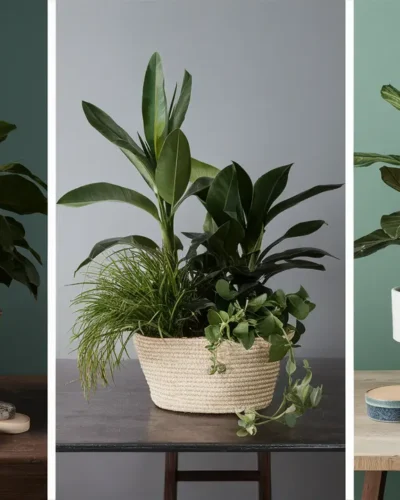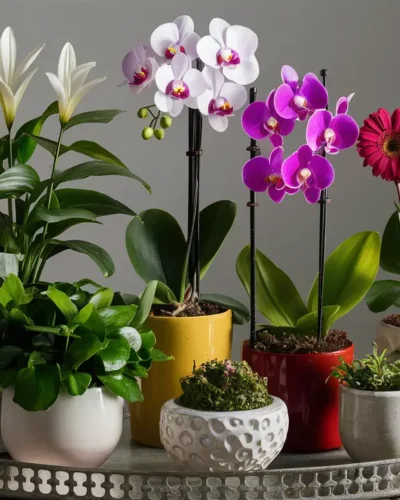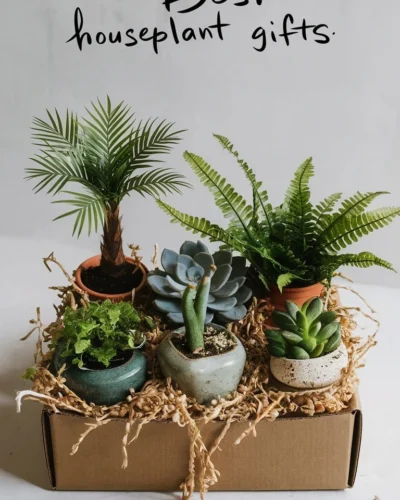The Quest for the Perfect Plant: Defining “Holy Grail”
Beyond the Hype: What Makes a Plant Truly “Holy Grail” Worthy?
So, you’re on the hunt for the holy grail of houseplants? You’ve seen the Pinterest-perfect photos, read the glowing reviews, and maybe even succumbed to a few impulse buys that…well, let’s just say they didn’t quite live up to the hype. The truth is, there’s no single “perfect” plant. What constitutes a “holy grail” houseplant really boils down to your lifestyle and expectations. For some, it’s a plant that thrives on neglect; for others, it’s one that offers stunning visual appeal. Heck, for some, it’s just something that survives their best efforts!
Table of Content:
- The Quest for the Perfect Plant: Defining “Holy Grail”
- Beyond the Hype: What Makes a Plant Truly “Holy Grail” Worthy?
- Durability vs. Drama: Finding the Right Balance
- The Myth of the Low-Maintenance Plant: Let’s Get Real
- FAQs
- Conclusion
- Low-Maintenance Legends: The Lazy Gardener’s Dream Team
- Snake Plants: The Unkillable Houseplant Icon
- ZZ Plants: Thriving in Neglect (Almost!)
- Cast Iron Plants: Living Up to Their Name
- Air-Purifying All-Stars: Breathe Easy, Literally
- Spider Plants: Tiny Filters, Big Impact
- Peace Lilies: Elegance and Air Purification Combined
- English Ivy: A Climbing Champion for Clean Air
- More Air-Purifying All-Stars
- Statement Plants: Making a Bold Impression
- Monstera Deliciosa: The Insta-Famous Houseplant
- Fiddle-Leaf Figs: The Statement Plant of Dreams (And Nightmares?)
- Bird of Paradise: Tropical Vibes Without the Tropical Climate
- Beyond the Basics: Special Considerations
- Light Levels: Matching Plants to Your Space
- Watering Wisdom: Avoiding Overwatering (and Underwateringt!)
- Pest Patrol: Keeping Your Plants Happy and Healthy
- Finding Your Holy Grail: A Personalized Approach
But let’s get down to brass tacks. A truly “holy grail” worthy houseplant should be relatively low-maintenance, resilient, and either visually striking or uniquely interesting. It should withstand the occasional (or even frequent) forgetfulness that accompanies a busy life. Think of it less as a demanding diva and more as a sturdy sidekick, consistently adding a touch of green to your home without demanding constant attention. You know, the kind of friend who doesn’t mind if you miss a call or two.
Choosing the Right Plant for Your Life
Before diving into specific plants, consider your environment. How much sunlight does your space get? Are you a chronic over-waterer or a perpetually forgetful waterer? Being honest with yourself about your plant-parenting skills is crucial. Choosing a plant that aligns with your lifestyle will drastically increase your chances of success and minimize those heartbreaking plant funerals. Plus, it’s a lot less stressful, isn’t it?
Durability vs. Drama: Finding the Right Balance
Many people assume that “low-maintenance” equates to boring. Not so! While certain plants tolerate neglect better than others, that doesn’t mean you have to compromise on aesthetics. Plenty of tough-as-nails plants boast vibrant colors, interesting foliage, or unique shapes. The key is finding a balance between durability and visual appeal that suits your preferences. If you like a dramatic plant with a bit more of a personality, you’re just going to have to put in the work. And hey, that’s part of the fun!
For instance, ZZ plants (Zamioculcas zamiifolia) are famously low-maintenance and nearly indestructible. They’re not particularly showy, but their sleek, dark green leaves provide a sophisticated touch. On the other hand, a snake plant (Sansevieria trifasciata) offers a range of interesting textures and patterns, and it’s quite the resilient survivor. Consider exploring low-maintenance options through resources like this article on ZZ plants or this guide to ZZ plant care to gain a better understanding.
Finding your Perfect Match
Think about it this way: Would you rather have a dependable friend who’s always there for you, or a charismatic friend who’s exciting but requires a lot of attention? Both types of friends have their place, and the same is true for houseplants. Choosing the right type for your needs is key to successful plant parenthood.
The Myth of the Low-Maintenance Plant: Let’s Get Real
Let’s be honest – even the most “low-maintenance” plant needs *some* care. The term “low-maintenance” doesn’t mean “no maintenance.” It simply means the plant can tolerate some neglect without immediately dying a dramatic death. Even a desert cactus will eventually succumb if you completely ignore it.
So, what does realistic houseplant care entail? Well, it varies by plant, but generally includes things like occasional watering (not overwatering!), occasional fertilizing (usually during the growing season), and an occasional check for pests or diseases. It’s not rocket science, but it does require a bit of mindfulness. You might even need to repot your plant occasionally; this article on repotting can guide you if you need help with that. Think of it as a gentle check-in, a friendly pat on the leaves, and a reminder that even the toughest plants appreciate a little love.
The key is to choose a plant that matches your ability to provide that minimum care. Don’t overestimate your capabilities. If you travel frequently, a succulent might be a better choice than a delicate orchid. If you’re prone to overwatering, a plant that tolerates drier conditions is a safer bet. There are plenty of amazing resources out there, such as this one: how to clean houseplant leaves. Learning about your plants’ needs will help you understand how to best care for them.
FAQs
- Q: What are some truly low-maintenance houseplants? A: ZZ plants, snake plants, cast iron plants, and pothos are often cited as excellent choices for beginners. Again, even these plants require some minimal care.
- Q: How often should I water my houseplants? A: This depends entirely on the plant, the soil, and the environment. Overwatering is a more common problem than underwatering. Check the soil moisture before watering. If it’s still damp, wait.
- Q: What if my plant starts to look unhealthy? A: Observe your plant carefully. Look for signs of pests, diseases, or improper watering. Research the specific needs of your plant and adjust your care accordingly. If you’re unsure, consult a local gardening expert or online resources.
- Q: Where can I find more information? A: Numerous resources are available online and in local gardening stores. You can look at the SproutFolk website, which has plenty of articles about houseplant care!
Conclusion
The quest for the holy grail of houseplants is a personal journey. There’s no one-size-fits-all answer. The best plant for you depends on your individual circumstances and preferences. By understanding your lifestyle, assessing your plant-parenting skills, and researching different plant options, you can find the perfect green companion to thrive in your home. So go forth and conquer the wonderful world of houseplants! You got this!
Low-Maintenance Legends: The Lazy Gardener’s Dream Team
Snake Plants: The Unkillable Houseplant Icon
Hey there, fellow plant enthusiasts! Let’s be honest, sometimes life gets crazy. Between work, family, and, well, *everything* else, who’s got time for high-maintenance houseplants? That’s where our low-maintenance legends come in, starting with the undisputed champion: the snake plant! This bad boy is practically indestructible. Seriously, you could probably forget to water it for weeks, and it’d still be chilling there, looking sassy.
Why Snake Plants are the Ultimate Lazy Gardener’s BFF
- Tolerates Neglect: These guys are champs at surviving drought. A little underwatering won’t even phase them. (But don’t make a habit of it!)
- Low Light Loving: Think of that dark corner you’ve been meaning to brighten? A snake plant is your solution! They can thrive in low-light conditions, making them perfect for nearly any room.
- Air Purifying Powerhouse: Not only are they easy to care for, but they also improve your air quality. Talk about a win-win!
- Variety is the Spice of Life (and Plant Collections!): From long and slender leaves to short and stout ones, there’s a snake plant to suit any style.
Snake Plant Care Tips (Even *You* Can Do This!)
- Watering: Water thoroughly when the soil is completely dry. Seriously, let it dry out!
- Light: Bright, indirect light is ideal. Avoid direct sunlight, which can scorch their leaves.
- Soil: Well-draining soil is crucial to prevent root rot. A cactus or succulent mix works great.
ZZ Plants: Thriving in Neglect (Almost!)
Next up in our lineup of low-maintenance marvels is the ZZ plant. This succulent-like beauty boasts glossy, dark-green leaves and a seriously low-maintenance attitude. It’s like the cool, collected cousin of the snake plant. They handle low-light conditions like champs and tolerate infrequent watering. You almost *have* to try to kill one, they’re that hardy.
Why ZZ Plants are Low-Maintenance Superstars
- Drought Tolerance: These plants store water in their rhizomes, meaning they can go for weeks without water.
- Low Light Champion: They thrive in low-light conditions, making them ideal for offices or bedrooms.
- Unique Appearance: Their striking dark leaves add a touch of elegance to any space.
- Easy Propagation: They’re remarkably easy to propagate from leaf cuttings, expanding your plant collection effortlessly.
ZZ Plant Care (Seriously, You Got This!)
- Watering: Allow the soil to dry completely between waterings. Overwatering is their biggest enemy.
- Light: Bright, indirect light is best, but they can tolerate very low light conditions.
- Soil: Well-draining potting mix is essential.
Cast Iron Plants: Living Up to Their Name
And now, for the grand finale—the cast iron plant. The name says it all, folks. This is the plant for those who have *literally* killed a cactus. These incredibly resilient plants can survive almost anything. Seriously, I’ve seen these plants hanging in completely neglected offices, still looking lush. They’re practically indestructible!
Why Cast Iron Plants are Built to Last
- Extreme Tolerance: They can handle low light, infrequent watering, temperature fluctuations, and even some neglect.
- Versatile Grower: They adapt to various conditions and soil types.
- Air Purification Benefits: Cast iron plants help to improve air quality, making them a healthy addition to your home.
- Long-lasting Beauty: With proper care (which is minimal!), they’ll grace your home with their vibrant green leaves for years.
Cast Iron Plant Care (Even Grandma Would Approve!)
- Watering: Water moderately when the top inch of soil is dry. Avoid overwatering!
- Light: They tolerate low to bright, indirect light. They’re adaptable to many light levels.
- Soil: A well-draining potting mix works best. Nothing fancy needed here.
So, there you have it—three incredible houseplants that are perfect for even the busiest, most forgetful plant parents. With minimal care, you can enjoy the beauty and air-purifying benefits of these low-maintenance legends. And hey, even if you *do* forget to water them once in a while (we’ve all been there!), these resilient plants will likely still be thriving. Happy growing!
Air-Purifying All-Stars: Breathe Easy, Literally
Spider Plants: Tiny Filters, Big Impact
What Makes Them Amazing?
Spider plants ( *Chlorophytum comosum*) aren’t just pretty; they’re bona fide air purifiers! These easy-to-care-for houseplants are known for their ability to remove harmful toxins like formaldehyde and carbon monoxide from the air. Seriously, they’re like tiny, green ninjas fighting air pollution. You’ll find tons of information on their air-purifying capabilities online – just search for “spider plant air purification.” And, hey, they’re super easy to propagate, too! You can literally just snip off a pup and stick it in water or soil to grow a whole new plant. Talk about a win-win!
Care Tips:
* Watering: Water when the top inch of soil feels dry. Overwatering is a common mistake, so err on the side of caution.
* Light: Bright, indirect light is ideal. Avoid direct sunlight, which can scorch their leaves.
* Soil: Well-draining potting mix is key. This helps prevent root rot.
Beyond Air Purification:
Beyond their air-purifying prowess, spider plants are remarkably low-maintenance. Even if you’re, like, a total plant newbie, you can totally rock these beauties. Plus, those adorable “spiderettes” (baby plants) hanging down? Adorable! They add an extra touch of whimsy to any space.
Peace Lilies: Elegance and Air Purification Combined
A Touch of Class, and Clean Air:
Peace lilies (*Spathiphyllum wallisii*) bring an elegant touch to any room, and they also happen to be pretty darn good at cleaning the air. These stunning plants are known to filter out things like formaldehyde, benzene, and trichloroethylene. They are seriously effective little pollution fighters, and they look amazing doing it! Need more proof? Check out some independent studies on their air-purifying abilities. You won’t be disappointed.
Care Tips for Peace Lilies:
* Watering: Peace lilies like consistently moist soil, but not soggy. Let the top inch of soil dry slightly between waterings. They’ll dramatically droop when thirsty – a great visual cue!
* Light: They thrive in bright, indirect light. Direct sunlight can burn their leaves.
* Humidity: These beauties appreciate higher humidity, so consider placing them near a humidifier or grouping them with other plants.
Beyond the Beauty:
Okay, let’s be honest: peace lilies are gorgeous. Their elegant, dark green foliage and striking white flowers add a touch of sophistication to any space. And, of course, they’re fantastic air purifiers to boot! It’s like getting two amazing things in one gorgeous package. It’s a home run.
English Ivy: A Climbing Champion for Clean Air
Climbing to New Heights (of Cleanliness):
English ivy (*Hedera helix*) is a vigorous climber that’s incredibly effective at purifying the air. This adaptable plant can remove formaldehyde, benzene, and other harmful compounds, making it a great choice for homes and offices. It’s also super versatile – you can train it to climb a trellis, cascade from a hanging basket, or even let it trail along the ground. The possibilities are endless!
Keeping Your English Ivy Happy:
* Watering: Water when the top inch of soil dries out. Avoid overwatering, as this can lead to root rot.
* Light: English ivy tolerates a range of light conditions, from bright, indirect light to low light.
* Support: If you want your English ivy to climb, provide it with a trellis or other support structure.
Versatile and Vigorous:
Beyond air purification, English ivy offers a touch of the outdoors, bringing life and texture to your indoor space. Its ability to climb makes it perfect for adding vertical interest to your home. Seriously, it’s a total space-saver for those of us with limited floor space! Plus, you can train it to grow in almost any shape or direction!
More Air-Purifying All-Stars
While spider plants, peace lilies, and English ivy are excellent choices, many other houseplants also contribute to cleaner air. The knowledge source mentions several other options, including, but not limited to, aloe vera, snake plants, and ZZ plants. Each has its own unique characteristics and care requirements. Remember, adding any houseplants to your home can contribute to improved air quality and create a more vibrant, relaxing environment. So get planting!
Statement Plants: Making a Bold Impression
Monstera Deliciosa: The Insta-Famous Houseplant
Hey there, plant lovers! Let’s talk about the Monstera deliciosa – you know, that incredibly popular, instantly recognizable plant that’s all over Instagram? Seriously, it’s *everywhere*. And for good reason! Its dramatically fenestrated leaves (those awesome splits and holes) make it a total showstopper. It’s got that “wow” factor that instantly elevates any room. But, is it all hype, or is it genuinely easy to care for?
Monstera Care: Easier Than You Think?
- Light: Indirect bright light is ideal. Think a spot a few feet away from a sunny window, you know? Too much direct sun can scorch the leaves – ouch!
- Watering: Allow the top inch or two of soil to dry out between waterings. Overwatering is a common killer, so don’t go overboard. Seriously, those big leaves can really store water!
- Humidity: Monsteras love humidity! Consider misting them regularly, or placing the pot on a pebble tray filled with water.
- Soil: Well-draining potting mix is key. A mix formulated for indoor plants is perfect. You don’t want those roots sitting in soggy soil, right?
- Fertilizing: Feed your Monstera every 2-4 weeks during the growing season (spring and summer) with a balanced liquid fertilizer. A little goes a long way!
- Propagation: Want more Monsteras? Propagating them from stem cuttings is surprisingly easy! Just check out some online tutorials – they’re plentiful. Check out this article on growing plants from cuttings for a little extra help.
Styling Your Monstera
Because of their size and striking leaves, Monsteras are very versatile. You can style them up in many ways. They look stunning in hanging baskets, on shelves, or even propped against a wall – it really depends on your design sense. Man, the possibilities are endless!
Fiddle-Leaf Figs: The Statement Plant of Dreams (And Nightmares?)
Oh, the fiddle-leaf fig. This plant is like the rockstar of the houseplant world. Its large, violin-shaped leaves are absolutely gorgeous, and they make a seriously bold statement. However, they’re also notoriously picky – it’s the kind of plant that can make you feel like a complete failure if you’re not careful.
Fiddle-Leaf Fig Care: A Delicate Balance
It’s true that these beauties can be demanding, but don’t be discouraged! With the right care, they’ll reward you with their stunning foliage. Let’s talk care, shall we?
- Light: Bright, indirect light is essential. Direct sun will definitely scorch those leaves. A few hours of morning sun is okay, though.
- Watering: Water thoroughly when the top inch of soil is dry. Again, overwatering is a big no-no. Allow the soil to dry out completely before watering again.
- Humidity: These plants thrive in humid environments. Regular misting or a humidifier can help.
- Soil: Well-draining potting mix is crucial. And don’t forget to repot your fiddle-leaf fig as it grows to provide adequate space for its roots.
- Temperature: Consistent temperatures are key. Avoid drastic temperature fluctuations or drafts.
- Fertilizing: Use a balanced liquid fertilizer once a month during the growing season.
Why the Fig’s Reputation is So Finicky
Their reputation precedes them. They are indeed a little more difficult than some of the other plants in this article. But don’t let that discourage you. They can be extremely rewarding once you master their care. That lush, vibrant green? It’s worth the effort, believe me.
Bird of Paradise: Tropical Vibes Without the Tropical Climate
Wanna bring a piece of paradise into your home? The Bird of Paradise plant is your answer. Its exotic, vibrant flowers and dramatic leaves are sure to add a touch of the tropics to your living space. While it may look like it needs a rainforest climate, it’s surprisingly adaptable.
Bird of Paradise Care: A Sun-Lover’s Delight
- Light: This plant craves bright, indirect light. A south- or west-facing window is usually ideal. Check out this article on houseplants that love sunlight.
- Watering: Allow the soil to dry out slightly between waterings. Avoid overwatering to prevent root rot. Check the soil before watering to be sure.
- Humidity: Like many tropical plants, Bird of Paradise appreciates higher humidity. Misting or a humidifier can do wonders.
- Soil: Use a well-draining potting mix. This prevents your precious Bird of Paradise from drowning. And who wants a soggy bird?
- Fertilizing: Fertilize every 2-4 weeks during the growing season with a balanced liquid fertilizer.
- Temperature: Keep it warm! Bird of Paradise prefers temperatures above 60°F (15°C).
Adding a Tropical Touch to Your Home
The Bird of Paradise is truly a show-stopping houseplant. Its unique appearance and relatively easy care make it a popular choice for experienced and beginning houseplant enthusiasts alike. You don’t need to live in a tropical climate to enjoy its beauty.
Beyond the Basics: Special Considerations
Light Levels: Matching Plants to Your Space
So, you’ve got your gorgeous new houseplants – congrats! But wait, there’s more to the story than just watering them occasionally. One of the *biggest* factors in your plant’s success is light. Seriously, get this wrong, and even the easiest-to-care-for houseplants will start looking droopy. Different plants need different amounts of light, you know? It’s not a one-size-fits-all situation. Some thrive in bright, direct sunlight, while others prefer the gentler touch of indirect light or even low-light conditions. Think of it like Goldilocks and the Three Bears – you gotta find just the *right* amount.
Bright Light Lovers
Certain plants, like succulents and cacti, absolutely *crave* bright, direct sunlight. Think of sunny windowsills—those are their happy places! Without enough light, these guys get leggy and unhappy. However, be careful not to scorch them. Gradually acclimate them to direct sunlight to avoid any sunburns.
Indirect Light Darlings
Many popular houseplants, such as snake plants and ZZ plants, do best with bright, *indirect* light. This means plenty of light, but filtered through a curtain or sheer blind. Direct sunlight can burn their leaves. It’s a bit like Goldilocks again, don’t you think? Just right! You can often find a spot near an east- or west-facing window that offers the perfect balance. For more info on choosing the right blinds, check out this article on choosing the best blinds for thriving houseplants.
Low-Light Champions
Some plants are remarkably tolerant of low-light conditions. Peace lilies and pothos are great examples. They’ll still appreciate some light, but they won’t sulk if they’re not basking in direct sunbeams. These are perfect for those north-facing windows or even corners of a room where light is minimal. Seriously, they’re the superheroes of the plant world.
Knowing Your Window
Before you even think about buying a plant, figure out what kind of light your available spots get. South-facing windows are generally the brightest, followed by west-facing, east-facing, and then north-facing windows. If you’re not sure, you can always use a light meter to get a precise measurement. It’s a small investment that can save you a lot of heartache down the line. And hey, even a simple observation throughout the day can help!
Watering Wisdom: Avoiding Overwatering (and Underwateringt!)
Okay, we all know that houseplants need water, right? But it’s not just about *how much* you water, but *how often*. Overwatering is a common culprit for unhappy houseplants. Seriously, it can lead to root rot, which is a nasty disease that’s often fatal. Conversely, underwatering also leads to problems!
The “Feel” Method
One of the best ways to check if your plant needs water is to stick your finger about an inch into the soil. If it feels dry, it’s time to water. If it’s still damp, wait a bit longer. Don’t just go by a schedule. Each plant and soil type is unique. You’ll learn to “feel” when your plant needs a drink.
Watering Techniques
When you do water, water thoroughly until water drains out of the drainage holes. This ensures that the roots get a good drink. Avoid leaving your plant sitting in standing water, though, as this can lead to root rot. And if you have multiple plants with varying needs, try labeling each pot to indicate when it was last watered. It might seem like overkill, but trust me, it’s a lifesaver.
Signs of Overwatering
Yellowing leaves, mushy stems, and a foul odor from the soil are all signs of overwatering. If you notice these signs, you might need to repot your plant in fresh, dry soil. This is crucial for recovery. For those more detailed repotting instructions, check out this helpful guide on repotting.
Signs of Underwateringt
On the flip side, underwatering causes its own set of issues. Leaves might become crispy or brown, and the soil will feel bone dry even at the surface. You might also see wilting or leaf drop.
Pest Patrol: Keeping Your Plants Happy and Healthy
Ugh, pests. They’re the bane of every plant parent’s existence. But don’t panic! Early detection is key. Regularly inspect your plants for signs of infestation. Look closely at the undersides of leaves, stems, and soil surface. You might spot tiny insects, webbing, or discoloration. Early intervention can save your plants.
Common Houseplant Pests
Some common houseplant pests include aphids, spider mites, mealybugs, and fungus gnats. Each pest has its own unique characteristics and control methods. If you’re unsure of what you’re dealing with, you can always do an image search online to identify the culprit and then research the best course of action. Don’t hesitate to consult your knowledge source for further tips and techniques.
Organic Pest Control
Before resorting to harsh chemicals, try some organic pest control methods. Neem oil is a popular choice, but there are many others, too. Sometimes, simply wiping down the leaves with soapy water can do the trick. And remember, good plant hygiene is your first line of defense! Keeping your plants clean and healthy is the best way to prevent pest problems in the first place.
Preventing Pests
Preventing pest infestations is much easier than dealing with them. Good air circulation is crucial. Avoid overwatering, as this creates a humid environment that pests love. Make sure to quarantine new plants before introducing them to your existing collection. You don’t want to introduce any unwelcome visitors to your green family.
Serious Infestations
If you have a really serious infestation that you can’t seem to get under control, you might need to resort to stronger measures. Again, your knowledge source might be able to offer specific guidance based on the type of pest you’re dealing with. Remember, prevention is always better than cure.
Finding Your Holy Grail: A Personalized Approach
Understanding Your Lifestyle: Picking Plants That Fit Your Life
So, you’re ready to dive into the wonderful world of houseplants? Awesome! But before you rush off and buy every cute little thing you see, let’s chat about *you*. Seriously! Choosing the right houseplant isn’t just about aesthetics; it’s about finding a green buddy that meshes with your lifestyle. Think of it like dating – you wouldn’t go out with someone who completely clashes with your personality, would you? Same goes for plants.
Are you a busy bee or a plant whisperer?
Honestly, how much time can you realistically dedicate to plant care? Are we talking a quick watering once a week or daily misting and meticulous soil checks? If you’re always on the go, low-maintenance plants like ZZ plants or snake plants are your best bet. They’re practically indestructible! Check out this article on why ZZ plants are so easy to care for.
Light levels: a crucial factor
Next up: light! Does your apartment get bathed in sunlight all day, or is it more of a dimly lit sanctuary? This is *crucial*. A sun-loving plant in a shadowy corner will just sulk. Conversely, a shade-loving plant in direct sunlight might get scorched. Know your lighting conditions, then select plants that match. You can learn more about choosing plants based on light levels on this guide here.
Space constraints: big plants, small spaces
Think about the space you have available. A sprawling monstera deliciosa might be gorgeous, but it needs room to grow! If you’re working with limited space, consider smaller plants or those that stay compact. There’s a fantastic guide to small houseplants in this link right here.
Pro Tip:
- Start small! Don’t overwhelm yourself with too many plants at once. Begin with one or two, and gradually expand your collection as you gain experience.
Choosing the Right Plants for Your Home Environment
Okay, you’ve got a handle on your lifestyle. Now, let’s talk about your home’s personality. Seriously, your house has a personality, and your plants should complement it. It’s like choosing the perfect outfit – you wouldn’t wear a ball gown to a picnic, would you?
Matching plants to your decor
Consider your existing décor. A minimalist aesthetic might call for sleek, sculptural plants, while a bohemian vibe might embrace overflowing, trailing plants. Think about color coordination, too! A pop of color could be just what your living room needs.
Humidity levels: thriving in different climates
Yep, humidity matters! Some plants crave a humid environment, while others prefer drier air. If you live in a particularly dry climate, you might need to increase humidity artificially. You can read more about controlling humidity and plant care in this article.
Temperature preferences: keeping your plants cozy
Plants are like Goldilocks – they need just the right temperature. Some thrive in warmer conditions, while others prefer cooler temps. Keep your plant’s needs in mind when choosing a spot for it in your home. Don’t forget to look at this guide on how to keep your plants thriving.
Embracing Imperfection: The Beauty of a Living, Growing Thing
Let’s face it: Sometimes, plants die. It happens. Don’t beat yourself up about it! It doesn’t mean you’re a plant murderer. Even the most experienced plant parents have lost a few along the way. The important thing is to learn from your mistakes and keep trying. Seriously, it’s a journey.
Learning from setbacks: plant parenting 101
When a plant kicks the bucket, take a moment to figure out what went wrong. Was it overwatering? Underwatering? Not enough light? Learning from your mistakes is a crucial part of the plant-owning process. You can always improve your skills! Here’s a good starting point.
The joy of watching them grow: appreciating the process
But hey, let’s focus on the positives! There’s something incredibly rewarding about nurturing a tiny plant and watching it flourish. The subtle changes, the new leaves unfurling – it’s all part of the magic. It’s a constant reminder of the beauty of nature’s rhythm, even within the confines of your home.
Finding your perfect plant match: patience is key
Finding the perfect houseplant for you might take some time and experimentation. Don’t get discouraged if your first choice doesn’t work out. Keep trying different plants, learn from your experiences, and celebrate your successes. Eventually, you’ll find your green soulmate – and that’s a truly beautiful thing.
Beyond the basics: exploring diverse plant options
The world of houseplants is vast and varied! From the delicate peace lily to the hardy snake plant, there’s a plant out there for everyone. Explore different species, and discover the unique characteristics of each. Some good starting points for finding your perfect plant are these 10 easy houseplants and this guide for beginners. You can also learn more about specific plants and their care requirements in many articles on the Sproutfolk site, including detailed guides on aloe vera care, Norfolk pine care, and many others.
Finding your “holy grail” plant isn’t about perfection; it’s about finding a plant that thrives in your specific environment and complements your lifestyle. Enjoy the journey, embrace the learning process, and most importantly, have fun!






